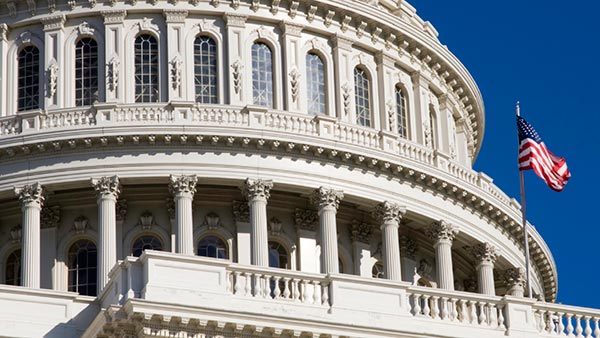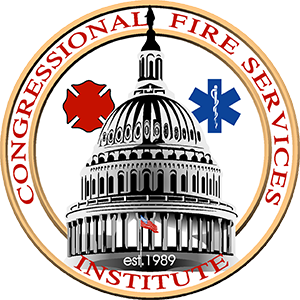Common Ground Can Lead to Common Good

Since the shutdown started two weeks ago, I’ve heard from friends and business associates alike who live and work outside the Beltway asking if I see an end to this madness. The answer: There have certainly been a number of proposals offered, but none of which have been embraced by both sides of the political aisle that would end the impasse…at least not yet.
Sadly, the mood in Washington is at its nadir in the 28 years I’ve been working here. It amazes me – or should I say astounds me – how this town has become so polarized. It’s hard to say when the shift started, but I believe it was when 24-hour news coverage came into existence. The constant and incessant coverage gives elected leaders little respite. Even the intonation in their voices and slight changes in their expressions are a part of a story, adding one more layer to how events are being covered.
What’s most frustrating about this current budget impasse is the obstinacy on display on both sides of the political aisle. It’s become a game of UNCLE with each side waiting for the other to give in. But why should either side play this game when there’s a better alternative that will end the gridlock in DC: to compromise. In today’s political climate, compromise is considered heresy by many hard-core crusaders. But back when Reagan was doing battle with Speaker Tip O’Neill, compromise kept our government functioning, and the animus that exists today was nowhere to be found even though the battles were just as fierce.
Chris Matthews, a former O’Neill aid and host of “Hardball”, just released a book that chronicled the relationship between his former boss and the Gipper. Describing the interaction between the two political giants, he said “There were rules in those days. Tip would say, ‘I’ll cut a deal on Social Security if you let me focus on taxing the wealthier people.’ There was always a deal. It’s not that they always found common ground, it’s that they each got something out of every deal. … A lot of times it was just getting something from the other guy.” Today, striking a deal has taken on a negative connotation, considered by some folks as capitulating. In my humble opinion, that’s why little is getting accomplished.
In today’s Washington Times, there is a front-page article on Congressman Paul Ryan, Chairman of the House Budget Committee. Ryan is working behind the scenes on a proposal to end the budget impasse. But some folks in this town are criticizing the Congressman for not being more rigid in his approach. “Has Congressman Ryan been spending too much time in Washington so that he’s lost the common sense of Wisconsin?” asked one special interest leader. “We thought those deep roots would inoculate him from the insatiable search for compromise that is D.C., but apparently they did not.”
I like what Ronald Reagan said about success in Washington, DC. “If I can get 70 or 80 percent of what it is I’m trying to get … I’ll take that and then continue to try to get the rest in the future.” Those are words both political parties should heed.
To understand the extent of the gridlock in Washington beyond the budget agreement and the looming debt ceiling problem, you have to put the legislative achievements of the 113th Congress in a historical context. We’ve all heard about Harry Truman’s “Do Nothing Congress”, but what you probably don’t know is that the “Do Nothing” Congress approved over 900 pieces of legislation. As of October 11th, the 113th Congress has approved 31 pieces of legislation – and that includes the Freedom to Fish Act and a bill that specifies the type of medal that can be used in the National Baseball Hall of Fame Commemorative Coin. I can’t imagine too many members going home to their constituents and sharing this information with them.
Unfortunately, not one of these 31 measures includes an appropriations bill, which is why we have the shutdown. When the appropriations process operates the way it should, Congress should enact 12 appropriations bill prior to the start of each fiscal year. These measures fund virtually all the federal programs – entitlement programs notwithstanding which are funded separately. But since 1977, Congress has failed to complete its fiscal work on time in all but three years – 1988, 1995 and 1997. And this year is no different. The House and Senate did not agree on one single measure. This is why we have the shutdown. Until Congress can approve a continuing resolution, much of the federal government will remain closed for business.
From a fire service perspective, the frustrating part with the impasse – and there are many – is that we had made some significant strides with FY2014 funding for USFA, AFG and SAFER. The DHS bill approved by the House would increase funding for AFG/SAFER by $5 million to $680 million and maintain funding for USFA at $44 million. The Senate bill would maintain funding for AFG/SAFER at the present level of $675 million. The Senate bill also contains language instructing USFA to continue its support of the National Fallen Firefighters Memorial Service.
Now it’s premature to say that Congress will reduce the funding amounts below the Senate figures (the lower of the two spending measures); however, a growing chorus of voices is calling for significant cuts in federal spending as part of any agreement on the second divisive issue: raising the debt ceiling. I just hope that all the messages the fire service organizations have delivered to the Hill about our funding priorities will resonate in the minds of our elected leaders when they decide on 2014 funding levels for our programs.
In addition to serving as Executive Director of the Congressional Fire Services Institute, I have the distinct honor of serving on the Board of Directors for the National Fallen Firefighters Foundation. As many fire service leaders know, the government shutdown forced the Foundation to make significant changes to the Memorial weekend. While these changes impacted the logistics, they had minimal effect on the quality of program we were able to offer to the surviving family members.
Executive Director Ron Siarnicki and his entire staff deserve a huge debt of gratitude for their extraordinary efforts – and I do mean extraordinary – in delivering a program we can all be proud of — as do the countless number of volunteers who offered their support. In addition, special thanks are extended to Mt. Saint Mary’s University and the Daughters of Charity for allowing us the use of their facilities on such short notice for the Memorial Service and Candlelight Ceremony. And a huge thanks goes to Congressman Steny Hoyer and US Fire Administrator Ernie Mitchell for their efforts in enabling the survivors to visit the National Fallen Firefighters Memorial on the National Emergency Management campus despite the shutdown.
But the madness I referred to in my opening sentence created some significant challenges that the Foundation will have to address in the coming months. Major changes to a program involving over 5,000 people can create additional costs — significant costs in our case. How the Foundation will offset these costs is an issue that my fellow board members and I will address. My point, however, is that leaders in Washington need to come to an understanding that rigidity is not a virtue but instead a vice. This shutdown is causing major challenges to a lot of people beyond what is being reported. As former Maine Senator Olympia Snowe said, “In a politically diverse nation, only by finding that common ground can we achieve results for the common good.” I hope we can find that common ground and realize that it is where we can work together to achieve the greater good for our country.
